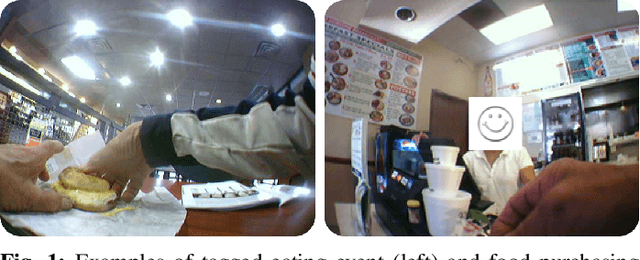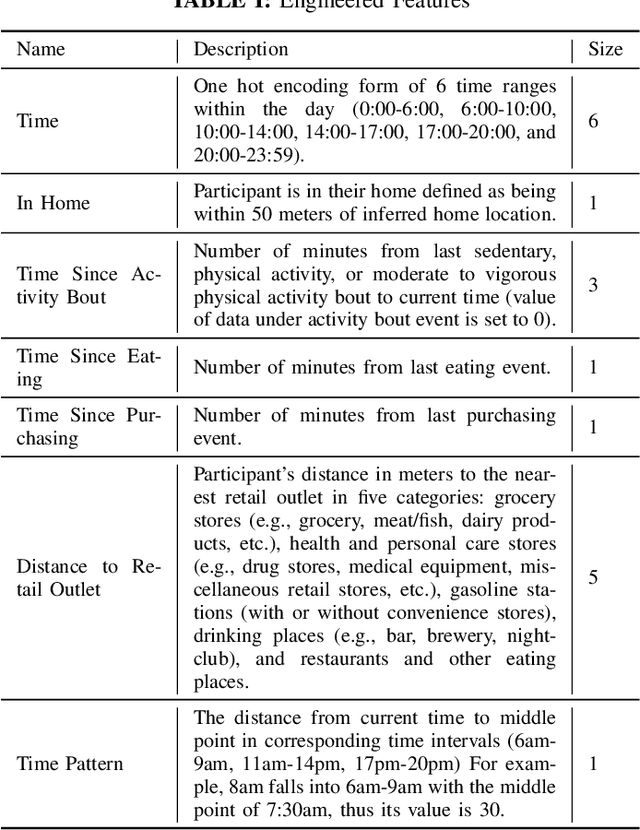Jiue-An Yang
Qualcomm Institute/Calit2, University of California San Diego, San Diego, USA
Predicting Eating Events in Free Living Individuals -- A Technical Report
Aug 14, 2019



Abstract:This technical report records the experiments of applying multiple machine learning algorithms for predicting eating and food purchasing behaviors of free-living individuals. Data was collected with accelerometer, global positioning system (GPS), and body-worn cameras called SenseCam over a one week period in 81 individuals from a variety of ages and demographic backgrounds. These data were turned into minute-level features from sensors as well as engineered features that included time (e.g., time since last eating) and environmental context (e.g., distance to nearest grocery store). Algorithms include Logistic Regression, RBF-SVM, Random Forest, and Gradient Boosting. Our results show that the Gradient Boosting model has the highest mean accuracy score (0.7289) for predicting eating events before 0 to 4 minutes. For predicting food purchasing events, the RBF-SVM model (0.7395) outperforms others. For both prediction models, temporal and spatial features were important contributors to predicting eating and food purchasing events.
 Add to Chrome
Add to Chrome Add to Firefox
Add to Firefox Add to Edge
Add to Edge